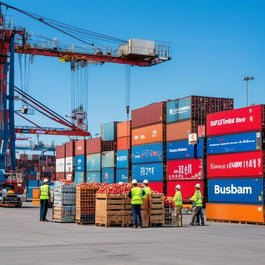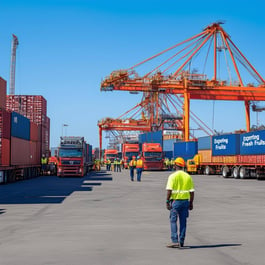Exporting Fruits: FCA Tokyo, Shipping from Port of Los Angeles
Summary
- Port of Loading: Port of Los Angeles, CA
- Port of Discharge: Port of Tokyo, Japan
- Commodity: Fruits
- Incoterms: FCA (Free Carrier)
- Payment Term: Letter of Credit
Key Insights:
- FCA Responsibilities: Sellers are responsible for delivering goods to the designated carrier cleared for export, while buyers handle freight, insurance, and import duties.
- Logistics Planning: Exporters should focus on selecting the right carrier, securing appropriate containers, and preparing shipments to comply with international regulations.
- Essential Documentation: Accurate shipping documents, including the commercial invoice, bill of lading, and certificate of origin, are critical for smooth customs clearance.
- Customs Management: Collaborating with a customs broker and ensuring all fees and inspections are addressed minimizes delays.
- Cost Optimization: Negotiating freight rates, ensuring adequate insurance, and leveraging tracking systems help exporters manage risks and improve efficiency.
Exporting agricultural and food products internationally requires meticulous planning and execution. This guide provides practical steps to optimize your shipments using FCA (Free Carrier) Incoterms, focusing on responsibilities, essential documentation, and best practices.
Step 1: Understand FCA Incoterms
FCA (Free Carrier) simplifies trade by clearly dividing responsibilities:
- Seller Responsibilities:
- Deliver goods to the carrier or specified location (e.g., Port of Los Angeles) cleared for export.
- Ensure proper packaging and labeling of goods.
- Provide export clearance documentation.
- Buyer Responsibilities:
- Arrange and pay for main freight and insurance.
- Handle import clearance and customs duties at the destination port (e.g., Port of Tokyo).
- Transport goods from the discharge port to the final destination.
Actionable Tip: Use FCA when you want to focus on export-side logistics while giving your buyer control over international freight and insurance.
Step 2: Plan Your Export Logistics
Efficient logistics planning ensures a smooth shipment process:
- Identify the Right Carrier:
- Research carriers operating between your origin (Port of Los Angeles) and destination (Port of Tokyo).
- Evaluate transit times, reliability, and costs.
- Arrange for Shipping Containers:
- Choose containers suitable for the commodity (e.g., refrigerated containers for perishable fruits).
- Prepare the Goods for Shipment:
- Follow international shipping regulations for packaging, labeling, and fumigation (if required).
- Book the Shipment:
- Confirm carrier schedules and secure space in advance to avoid delays.
Actionable Tip: Use digital logistics platforms to compare carrier options and streamline container bookings.
Step 3: Prepare Essential Shipping Documents
Accurate documentation is critical for smooth customs clearance and delivery:
- Commercial Invoice: Lists goods, their value, and transaction terms.
- Bill of Lading (BOL): A legal contract and receipt between shipper and carrier.
- Packing List: Details the contents of each package.
- Certificate of Origin: Specifies the goods’ origin.
- Letter of Credit (if applicable): Ensures secure payment terms for the seller.
Actionable Tip: Validate all documents for consistency to prevent customs delays.
Step 4: Navigate Customs Clearance
Proper customs management ensures compliance and avoids shipment rejection:
- Submit required documents to customs officials at the port of discharge (Tokyo, Japan).
- Pay any applicable duties and taxes.
- Respond promptly to requests for additional information or inspections.
- Await customs clearance before proceeding with delivery.
Actionable Tip: Work with a customs broker familiar with both U.S. and Japanese trade regulations.
Step 5: Optimize Freight Costs and Risk Management
- Freight Selection: Negotiate rates with carriers to secure cost-effective freight solutions.
- Insurance Coverage: While FCA does not require the seller to insure goods in transit, collaborating with the buyer to ensure adequate coverage can protect against risks.
- Monitoring Shipments: Use real-time tracking to ensure timely delivery and address potential issues promptly.
Actionable Tip: Establish communication protocols with buyers and carriers to handle unexpected delays.
Key Takeaways for Exporters
- Choose the Right Incoterm: FCA is ideal for exporters focusing on the delivery of goods to the port of origin while granting buyers control over international freight and insurance.
- Document Accuracy is Crucial: Ensure all documentation aligns with the shipment details to avoid customs delays.
- Collaborate for Success: Clear communication with buyers, carriers, and customs brokers ensures smooth transactions.
By following these steps, U.S. exporters can enhance efficiency, reduce risks, and build long-term success in international markets.




Leave a Comment